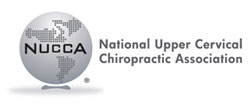By D. Gordon Hasick, D.C. Vol. 5, No. 1, March 1991 Patient education and communication is a wonderful challenge and is essential for excellent care. The word “education” comes from…
NUCCA Practice Principles
The NUCCA procedure is based upon the “restoration principal©” and the protocols are designed to support the practice and standards of clinical care. Since its inception and with constant study, the monitoring and research into the most effective and reproducible protocols has brought us to where we are today. The NUCCA certification process is a testament to the reliability and consistency of this care model. The NUCCA Certification and Standards board has established the fundamental and foundational practice standards that are the principles behind this work. This is the foundation upon which the accurate and appropriate interventions are used to attend to the optimal reduction of the ASC complex and the management of the ASC syndrome.
The hallmark of the NUCCA practice is the optimal and sustained correction of the ASC complex. Corrective intervention is only offered when the objective measurements indicate the presence of the ASC complex. It has been well established and experienced over many decades of care, that an optimal reduction of the ASC produces a sustained change for many patients. Some of the benefits of applying these principles include reduced practitioner dependency with enhanced function and a better quality of life.
What one can come to expect from a NUCCA practitioner and clinic experience as a baseline is as follows:
1) A thorough history and evaluation of one’s condition to determine the appropriateness and application of NUCCA care. This includes a differential diagnosis and sensitivity to other conditions that may influence the presenting condition and health challenge.
2) The NUCCA supine leg check evaluation protocol
3) A postural evaluation determined ideal symmetry and postural balance.
These first three findings are indicators of the presence or absence of the ASC complex syndrome. If the ASC complex is present, and with patient consent, the next steps are followed.
4) NUCCA pre-correction x-ray protocol with biomechanical evaluation.
5) Utilizing the Pre x-ray information, a reduction pathway vector is calculated and used to apply a controlled force, in terms of depth and direction, for the optimal reduction of the ASC complex. NUCCA headpiece placement, biomechanics, and adjusting protocols are detailed and followed to ensure consistency and accuracy.
6) Immediately following the initial NUCCA correction protocol, a post correction x-ray evaluation with biomechanical assessment is performed. This confirms the degree of reduction of the ASC and whether additional corrective work is needed. Traditionally these x-rays are read immediately following the first correction and if necessary, additional efforts towards further reduction of the ASC are performed that first visit.
7) Follow-up visits are scheduled to evaluate the influence of the correction on postural changes and functional leg length changes. Symptomatic assessment and monitoring is also performed on follow up visits to ensure favorable outcomes are fully achieved.
8) As a historic tradition, a maximal reduction of the ASC produces stability that is traditionally maintained over time. Additional changes in lifestyle and adapting activities of daily living help to ensure the correction is maintained for as long as possible. Patient participation and compliance with follow-up recommendations also helps ensure the sustained correction. The objective is to reduce practitioner dependency and enhance quality of life.
Based on the “restoration principal©”, practitioners utilizing the detailed NUCCA protocols have proven time after time to provide care that results in the correction, stability and improved function and quality-of-life. The sustainability of the correction provides benefits on many levels. The resilience of a balanced and stable system, physiologically and structurally in relationship to gravity makes the NUCCA procedure a unique and extremely influential part of our healthcare community.






